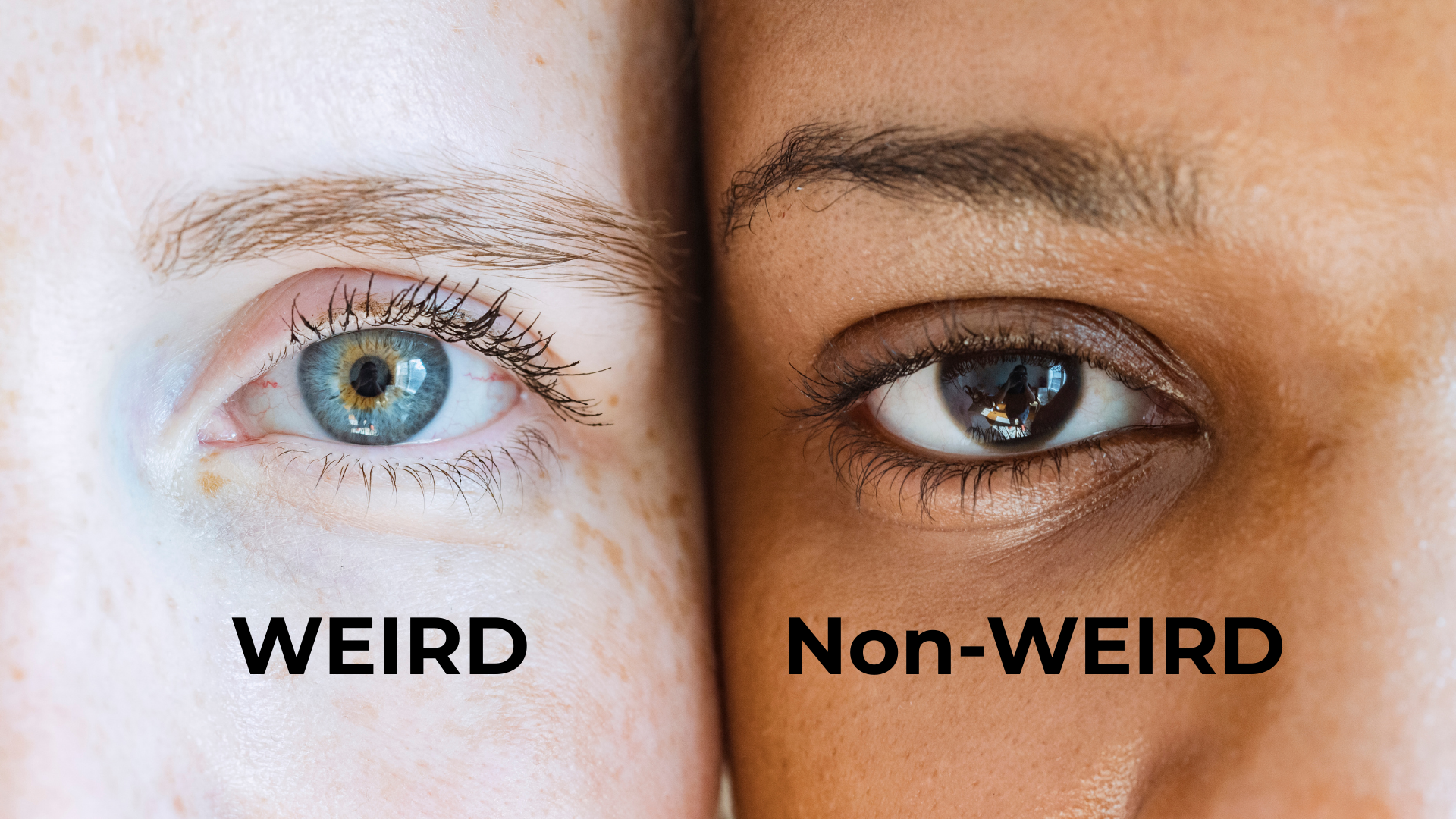Imagine you are a professional soccer player who has just missed a crucial penalty kick in a championship game. You feel devastated, embarrassed, and angry. How do you cope with this setback? How do you bounce back and perform well in the next game? How do you learn from this experience and improve your skills? These questions relate to two important psychological concepts in sport and exercise: resilience and adaptability.
Resilience is the ability to cope with stress, adversity, and change in a positive and constructive way, whereas adaptability is the ability to adjust to changing situations and demands in a flexible and creative way. Both resilience and adaptability are essential for optimal performance and well-being in performance psychology contexts, where athletes and exercisers face various physical, mental, emotional, and environmental challenges.
However, resilience and adaptability are not fixed traits that some people have and others don’t. They are dynamic processes that can be developed and enhanced through various strategies, such as goal-setting, positive self-talk, coping skills, social support, feedback, reflection, visualization, and problem solving. Moreover, resilience and adaptability are influenced by multiple factors, such as personality, motivation, emotions, physiology, and load and recovery.
The aim of this article is to provide a comprehensive overview of resilience and adaptability in sport and exercise. I will define these concepts, describe their characteristics and benefits, explain how they can be developed and enhanced, provide practical recommendations and tips for athletes, exercisers, coaches, and practitioners, highlight the challenges and limitations of applying these concepts in real-world contexts, and suggest directions for future research and practice. This article is relevant for a wide variety of audience, including students, researchers, athletes, and coaches who want to learn more about resilience and adaptability in sport and exercise.
Resilience in Sport and Exercise
"Resilience is the ability to cope with stress, adversity, and change in a positive and constructive way"
Resilience is not about avoiding or denying stress, but rather about facing it and overcoming it. Resilience is also not about being unaffected or unemotional, but rather about being able to regulate and express emotions appropriately. Resilience is a dynamic process that involves cognitive, emotional, behavioural, and physiological responses to stressors.
Resilient athletes and exercisers are those who can maintain or restore their performance and well-being in the face of various challenges, such as injuries, losses, setbacks, conflicts, pressure, and fatigue. Resilient athletes and exercisers have certain characteristics that help them cope with stress effectively. Some of these characteristics are:
- Optimism: Resilient athletes and exercisers have a positive outlook on the future and believe that they can achieve their goals and overcome difficulties. They focus on the opportunities rather than the threats in stressful situations. They also have a realistic sense of their strengths and weaknesses and do not engage in self-deception or denial.
- Focus: Resilient athletes and exercisers have a clear sense of purpose and direction. They know what they want to achieve and why. They are able to concentrate on the task at hand and ignore distractions. They are also able to switch their attention from one aspect of the situation to another as needed.
- Motivation: Resilient athletes and exercisers have a strong desire to succeed and improve. They are driven by intrinsic motivation, such as enjoyment, interest, curiosity, and challenge. They are also influenced by extrinsic motivation, such as rewards, recognition, and feedback. They are able to persist in the face of obstacles and setbacks and do not give up easily.
- Coping skills: Resilient athletes and exercisers have a repertoire of strategies to deal with stress effectively. They can use both problem-focused coping (e.g., planning, problem solving, and seeking information) and emotion-focused coping (e.g., relaxation, positive self-talk, and seeking social support) depending on the situation. They can also use both approach coping (e.g., confronting and accepting) and avoidance coping (e.g., distancing and distracting) depending on the situation.
- Social support: Resilient athletes and exercisers have a network of people who care for them and support them in times of stress. They can seek and receive emotional, informational, instrumental, or appraisal support from their family, friends, teammates, coaches, and mentors. They can also provide support to others who need it.
Resilience has many benefits for physical and mental health, motivation, and performance in sport and exercise contexts. Some of these benefits are:
- Physical health: Resilience can help athletes and exercisers prevent or reduce the negative effects of stress on their immune system, cardiovascular system, and endocrine system. Resilience can also help athletes and exercisers recover faster from injuries or illnesses and return to their normal functioning sooner.
- Mental health: Resilience can help athletes and exercisers prevent or reduce the negative effects of stress on their mood, self-esteem, and confidence. Resilience can also help athletes and exercisers cope with negative emotions such as anxiety, anger, and sadness. Resilience can also help athletes and exercisers develop positive emotions such as happiness, gratitude, and hope.
- Motivation: Resilience can help athletes and exercisers maintain or increase their motivation to pursue their goals and improve their skills. Resilience can also help athletes and exercisers cope with failure or feedback in a constructive way and use them as learning opportunities. Resilience can also help athletes and exercisers develop a growth mindset that embraces challenges and views effort as a path to mastery.
- Performance: Resilience can help athletes and exercisers maintain or enhance their performance in stressful situations by allowing them to regulate their arousal level, focus their attention, control their thoughts, and execute their actions effectively. Resilience can also help athletes and exercisers learn from their performance and make adjustments for future situations.
There are many examples of resilient athletes and exercisers from different sports and domains who have demonstrated their ability to cope with stress, adversity, and change in a positive and constructive way. Some of these examples are:
- Michael Jordan: The legendary basketball player who was dropped from his high school varsity team but used that as motivation to work harder and become one of the greatest players of all time. He also faced many challenges and setbacks throughout his career, such as injuries, losses, and retirement, but always bounced back and achieved more success.
- Serena Williams: The tennis champion who overcame various physical and emotional challenges, such as injuries, illnesses, pregnancy, racism, and sexism, to become one of the most dominant and influential athletes of all time. She also showed resilience in her comeback from a life-threatening pulmonary embolism in 2011 and a near-fatal childbirth in 2017.
- Eliud Kipchoge: The marathon runner who broke the world record and became the first person to run a marathon in under two hours in 2019. He also showed resilience in his previous attempts to break the barrier, such as in 2017 when he missed it by 25 seconds and in 2018 when he faced unfavourable weather conditions.
- Simone Biles: The gymnast who withdrew from several events at the 2020 Tokyo Olympics due to mental health issues and the “twisties”, a condition that affects spatial awareness and coordination. She also showed resilience in her return to win bronze on the beam, as well as in her previous experiences (of overcoming abuse and foster care) to become one of the most decorated gymnasts of all time.
Adaptability in Sport and Exercise
"Adaptability is the ability to adjust to changing situations and demands in a flexible and creative way"
Adaptability is not about being passive or reactive, but rather about being proactive and innovative. Adaptability is also not about being inconsistent or unpredictable, but rather about being versatile and resourceful. Adaptability is a dynamic process that involves cognitive, emotional, behavioural, and physiological responses to change.
Adaptable athletes and exercisers are those who can cope with uncertainty, complexity, and novelty in sport and exercise contexts, where athletes and exercisers face various changes, such as rule changes, environmental changes, opponent changes, and task changes. Adaptable athletes and exercisers have certain characteristics that help them deal with change effectively. Some of these characteristics are:
- Versatility: Adaptable athletes and exercisers have a broad range of skills and abilities that they can apply in different situations. They can switch between different roles, strategies, and techniques as needed. They can also learn new skills and abilities quickly and easily.
- Vision: Adaptable athletes and exercisers have a clear sense of direction and goals. They know what they want to achieve and how. They are able to anticipate future scenarios and plan ahead. They are also able to improvise and adapt their plans when necessary.
- Attentiveness: Adaptable athletes and exercisers have a high level of awareness and sensitivity. They can monitor their own performance and feedback. They can also observe and analyze their environment and opponents. They are able to detect and respond to cues and signals that indicate change or opportunity.
- Competence: Adaptable athletes and exercisers have a high level of confidence and self-efficacy. They believe in their own capabilities and potential. They are not afraid of challenges or risks. They are also willing to seek and accept help or advice when needed.
- Self-correction: Adaptable athletes and exercisers have a high level of reflection and evaluation. They can assess their own strengths and weaknesses objectively. They can also learn from their own experiences and mistakes. They are able to make adjustments and improvements for future situations.
Adaptability has many benefits for learning, creativity, innovation, and performance in sport and exercise psychology contexts. Some of these benefits are:
- Learning: Adaptability can help athletes and exercisers acquire new knowledge and skills faster and more effectively. Adaptability can also help athletes and exercisers transfer their knowledge and skills from one situation to another. Moreover, adaptability can help athletes and exercisers integrate their knowledge and skills from different domains and disciplines.
- Creativity: Adaptability can help athletes and exercisers generate novel and original ideas and solutions for problems or challenges. Adaptability can also help athletes and exercisers express their individuality and uniqueness in their performances. Moreover, adaptability can help athletes and exercisers overcome mental blocks or barriers that limit their creativity.
- Innovation: Adaptability can help athletes and exercisers implement their ideas and solutions in practice. Adaptability can also help athletes and exercisers test their ideas and solutions in real-world contexts. Moreover, adaptability can help athletes and exercisers refine their ideas and solutions based on feedback or results.
- Performance: Adaptability can help athletes and exercisers maintain or enhance their performance in changing situations by allowing them to adjust their goals, strategies, and techniques as needed. Adaptability can also help athletes and exercisers gain a competitive edge over less adaptable opponents. Moreover, adaptability can help athletes and exercisers create new opportunities for success.
There are many examples of adaptable athletes and exercisers from different sports and domains who have demonstrated their ability to cope with change in a flexible and creative way. Some of these examples are:
- Roger Federer: The tennis legend who has won 20 Grand Slam titles by adapting his game style, equipment, and training to suit different surfaces, opponents, and conditions. He has also reinvented his game several times throughout his career, such as by adding new shots like the SABR (Sneak Attack By Roger) or by changing his racket size.
- Simone Manuel: The swimmer who became the first African-American woman to win an individual Olympic gold medal in swimming at the 2016 Rio Olympics by adapting her technique, strategy, and mindset to overcome the challenges of racism, sexism, and pressure. She has also used her platform to advocate for social change and inspire others.
- Tom Brady: The quarterback who has won seven Super Bowl titles by adapting his skills, knowledge, and leadership to different teams, coaches, and systems. He has also maintained his high level of performance at the age of 44 by adapting his diet, lifestyle, and recovery to his changing needs.
- Tatyana McFadden: The wheelchair racer who won 17 Paralympic medals and 24 major marathon titles by adapting her training, equipment, and tactics to different distances, terrains, and climates. She has also overcome various adversities in her life, such as being born with spina bifida, growing up in an orphanage, and facing discrimination and legal battles.
Resilience and Adaptability in Practice
In the previous sections, I have defined, described, and explained resilience and adaptability in sport and exercise contexts. I have also provided examples of resilient and adaptable athletes and exercisers from different domains. In this section, I will provide some practical recommendations and tips for athletes, exercisers, coaches, and practitioners on how to foster resilience and adaptability in sport and exercise settings. I will also highlight some of the challenges and limitations of applying these concepts and interventions in real-world contexts. Finally, I will suggest some directions for future research and practice on resilience and adaptability in sport and exercise.
Practical Recommendations and Tips
In this section, based on the existing literature and evidence, I offer some practical recommendations and tips for athletes, exercisers, coaches, and practitioners on how to foster resilience and adaptability in sport and exercise settings. These recommendations and tips are not exhaustive or prescriptive, but rather indicative and suggestive. They should be tailored to the specific needs, goals, preferences, and contexts of each individual or group.
☞ Ensure clarity of what resilience and adaptability are and are not: Resilience and adaptability are not fixed traits or one-size-fits-all concepts. They are dynamic processes that vary across situations, domains, and levels. They are also not mutually exclusive or contradictory. They can complement or conflict with each other depending on the situation. It is important to understand what resilience and adaptability mean for each individual or group, what are the sources and indicators of resilience and adaptability, and what are the benefits and costs of resilience and adaptability. It is also important to avoid misconceptions or myths about resilience and adaptability, such as that resilient or adaptable people are invincible, emotionless, flawless, inconsistent, unpredictable, or uncommitted.
☞ Enhance and refine personal qualities: Resilience and adaptability are influenced by various personal qualities, such as optimism, focus, motivation, coping skills, social support, versatility, vision, attentiveness, competence, and self-correction. These qualities can be enhanced and refined through various strategies, such as goal-setting, self-talk, relaxation, positive feedback, cognitive restructuring, reappraisal, attribution, mental imagery, mental rehearsal, and problem solving. It is important to identify which qualities are more relevant or helpful for each individual or group, what are their strengths and weaknesses in these qualities, and how they can improve or maintain these qualities.
☞ Evoke and maintain a challenge and a growth mindset: Resilience and adaptability are facilitated by a challenge mindset and a growth mindset that view stressors and challenges as opportunities rather than threats. A challenge mindset and a growth mindset can be evoked and maintained through various strategies, such as praise, encouragement, and change. It is important to help each individual or group develop a challenge mindset and a growth mindset that are realistic, positive, and flexible. Individuals can incorporate this mindset in their training and pre-performance routines. It is also important to monitor and regulate the level and type of stressors and changes to ensure that they are optimal and manageable for each individual or group.
☞ Create a facilitative environment: Resilience and adaptability are influenced by various environmental factors, such as culture, climate, and resources. These factors can be created or modified to facilitate resilience and adaptability in sport and exercise settings. It is important to create or maintain an environment that is supportive, safe, inclusive, empowering, stimulating, diverse, and innovative for each individual or group. It is also important to provide or access the necessary resources and services that can help each individual or group cope with stress and adjust to change effectively.
Challenges and Limitations
While resilience and adaptability are important and beneficial concepts and interventions in sport and exercise contexts, they are not without challenges and limitations. Some of these challenges and limitations are:
- Measurement: Resilience and adaptability are complex and multidimensional constructs that are difficult to measure accurately and reliably. There is a lack of valid and reliable instruments to assess resilience and adaptability in sport and exercise contexts. Moreover, there is a lack of consensus on the definitions, dimensions, indicators, and outcomes of resilience and adaptability in sport and exercise contexts. Therefore, it is challenging to compare and generalize the results of different studies and interventions on resilience and adaptability in sport and exercise contexts.
- Implementation: Resilience and adaptability are dynamic and context-specific processes that require tailored and flexible interventions. There is no one-size-fits-all approach to foster resilience and adaptability in sport and exercise contexts. Moreover, there are various barriers and facilitators that affect the implementation of resilience and adaptability interventions in sport and exercise contexts, such as time, resources, motivation, and commitment. Therefore, it is challenging to design and deliver effective and sustainable interventions on resilience and adaptability in sport and exercise contexts.
- Evaluation: Resilience and adaptability are long-term and multifaceted outcomes that require comprehensive and rigorous evaluation. There is a lack of clear and consistent criteria to evaluate the effectiveness and impact of resilience and adaptability interventions in sport and exercise contexts. Moreover, there are various confounding and moderating factors that affect the evaluation of resilience and adaptability interventions in sport and exercise contexts, such as individual differences and environmental factors. Therefore, it is challenging to determine the value and quality of resilience and adaptability interventions in sport and exercise contexts.
Directions for Future Research and Practice
Based on the current state of knowledge and evidence on resilience and adaptability in sport and exercise contexts, I suggest some directions for future research and practice on these concepts and interventions. Some of these directions are:
- Develop valid and reliable measures of resilience and adaptability in sport and exercise contexts. This would help to advance the theoretical and empirical understanding of these constructs, as well as to facilitate the comparison and generalization of different studies and interventions on these constructs.
- Explore the interactions and synergies between resilience and adaptability in sport and exercise contexts. This would help to understand how these constructs complement or conflict with each other, as well as how they can be integrated or balanced for optimal performance and well-being.
- Investigate the mechanisms and processes underlying resilience and adaptability in sport and exercise contexts. This would help to understand how these constructs work, why they work, for whom they work, and under what conditions they work.
- Examine the outcomes and impacts of resilience and adaptability in sport and exercise contexts. This would help to understand what are the short-term and long-term benefits or costs of these constructs for performance, health, motivation, learning, creativity, and innovation.
- Design and deliver tailored and flexible interventions on resilience and adaptability in sport and exercise contexts. This would help to meet the specific needs, goals, preferences, and contexts of each individual or group, as well as to overcome the barriers and leverage the facilitators of these interventions.
- Evaluate the effectiveness and impact of resilience and adaptability interventions in sport and exercise contexts. This would help to determine the value and quality of these interventions for performance, health, motivation, learning, creativity, and innovation, as well as to identify the best practices and areas for improvement of these interventions.
Conclusion
In this article, I have provided a comprehensive overview of resilience and adaptability in sport and exercise. I have defined these concepts, described their characteristics and benefits, explained how they can be developed and enhanced, provided practical recommendations and tips for athletes, exercisers, coaches, and practitioners, highlighted the challenges and limitations of applying these concepts in real-world contexts, and suggested directions for future research and practice.
I hope that this article has been informative and has inspired you to learn more about resilience and adaptability in sport and exercise. These concepts are not only relevant for athletes and exercisers, but also for anyone who wants to cope with stress, adversity, and change in a positive and constructive way. Resilience and adaptability are not innate or fixed, but rather dynamic and trainable, which can be developed and enhanced through various strategies. However, resilience and adaptability are not easy or simple; they require effort, practice, feedback, and support.
Finally, I encourage you to share your thoughts on resilience and adaptability. Do you have an experience and/or comment that you would like to share? Feel free to comment below.
And remember: be resilient and adaptable!
If you enjoyed reading this article, you may also like this article that summarizes 10 Effective Mental Strategies for Sports Performance Enhancement:















Discussion